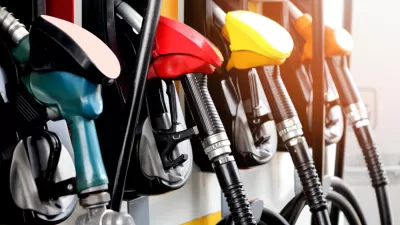An IEA report suggests that oil prices have bottomed-out, are now on the rebound, and that demand for OPEC's oil will start rising next year. OPEC predicts that U.S. oil consumption will increase after years of decline, thanks to U.S. motorists.
"OPEC also sees American motorists as an ally," write Sarah Kent and Benoît Faucon of The Wall Street Journal. "The cartel increased its forecast for North American oil consumption by 15,000 barrels a day, a shift that translates into an increase of 20,000 barrels a day in forecast demand growth world-wide."
“Gasoline, in particular, remains a key driver behind the growth in U.S. oil demand, largely a result of lower oil prices,” OPEC said. Overall, oil consumption is expected to increase by 1.17 million barrels a day to 92.32 million barrels a day.
The additional oil demand from the U.S. is a cherry on top of their main goal—reducing global oil production, particularly from America's fracking wells, which was one of the findings of the Feb. 10 International Energy Agency (IEA) report:
A wave of spending cuts by oil producers and a sharp decline in the number of rigs drilling for crude in the U.S. likely will slow the nation’s oil-output growth, spurring a rebound in prices.
"The conclusions drawn from the IEA and the OPEC reports indicate that OPEC’s strategy to protect market share by keeping the spigots open is showing early signs of success," write Kent and Faucon. "Led by Saudi Arabia, OPEC in November surprised markets when it maintained its production levels, a move that some observers said was aimed at weakening U.S. shale-oil producers."
However, not everyone is aboard the "glut is abating" boat, even if the IEA report gives it credibility. Steve LeVine, Quartz's Washington correspondent, reports that two major investment banks believe that prices have not bottomed, one believing that prices could drop to the $20 per barrel level, the other saying "the price will average $40 to $50 a barrel for the year as a whole."
Either way, OPEC wins. The longer American motorists enjoy cheap gas prices, the longer the U.S. is hooked on cheap oil and push up U.S. oil demand, making them OPEC's best friend.
If there's one lesson to be learned here, it's that if U.S. leaders want to achieve energy security, or as some call it, energy independence, they will need to do more than just boost production, now shown rather ironically to be vulnerable to OPEC's pricing tactics; consumption needs to be looked at as well.
Correspondent's note: Subscriber-only content to Wall Street Journal article should be available to non-subscribers for up to seven days after Feb. 10.
FULL STORY: Oil-Price Rebound Predicted: IEA Adds to Chorus of Voices Saying Glut Will Abate

Planetizen Federal Action Tracker
A weekly monitor of how Trump’s orders and actions are impacting planners and planning in America.

Chicago’s Ghost Rails
Just beneath the surface of the modern city lie the remnants of its expansive early 20th-century streetcar system.

San Antonio and Austin are Fusing Into one Massive Megaregion
The region spanning the two central Texas cities is growing fast, posing challenges for local infrastructure and water supplies.

Since Zion's Shuttles Went Electric “The Smog is Gone”
Visitors to Zion National Park can enjoy the canyon via the nation’s first fully electric park shuttle system.

Trump Distributing DOT Safety Funds at 1/10 Rate of Biden
Funds for Safe Streets and other transportation safety and equity programs are being held up by administrative reviews and conflicts with the Trump administration’s priorities.

German Cities Subsidize Taxis for Women Amid Wave of Violence
Free or low-cost taxi rides can help women navigate cities more safely, but critics say the programs don't address the root causes of violence against women.
Urban Design for Planners 1: Software Tools
This six-course series explores essential urban design concepts using open source software and equips planners with the tools they need to participate fully in the urban design process.
Planning for Universal Design
Learn the tools for implementing Universal Design in planning regulations.
planning NEXT
Appalachian Highlands Housing Partners
Mpact (founded as Rail~Volution)
City of Camden Redevelopment Agency
City of Astoria
City of Portland
City of Laramie



























